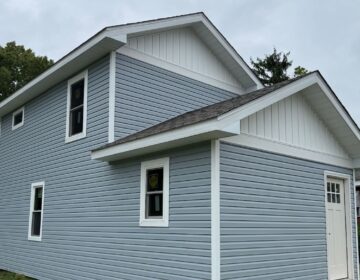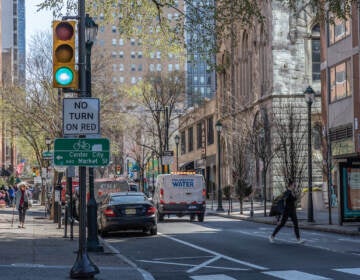Pew finds most poor Philly renters receive no public assistance

(David Swift)
A new study out today from the Pew Charitable Trusts shows that the vast majority of low-income Philadelphians receive no assistance with their housing costs. As a result, many have to rely on unconventional and sometimes illegal arrangements to secure shelter.
“The key housing takeaway is that four out of five low-income households in the city live in private market housing with no rent subsidies,” said Octavia Howell, researcher for The Pew Charitable Trusts’ Philadelphia research initiative and author of the report. “80 percent of people living in that private housing are devoting at least half their income to housing costs.”
This data can be found in Pew’s report titled “Philadelphia’s Poor: Experiences From Below the Poverty Line,” which collects data from polls and the trust’s own analysis to provide insight into workforce participation, neighborhood violence, and insecure housing.
The research highlights the grim reality that government assistance for low-income housing does not reach the vast majority of those in need. Programs like the Housing Choice Voucher Program, colloquially known as Section 8, have never enjoyed the flexibility of, say, food subsidies programs.
Once someone’s income falls below a certain level they become eligible for Supplemental Nutrition Assistance Program formerly (known as food stamps). Low-income people in need of housing, however, usually have to join the queue. There are 42,900 families currently on the Philadelphia Housing Authority’s waiting list.
Pew’s report details the alternative arrangements that low-income people have to turn to for shelter. Many Philadelphians “double up,” where multiple families squeeze into the same house. They also turn to landlords who operate in the vast shadow economy of unregulated housing units in Philadelphia’s low-income neighborhoods. Pew found that around 28 percent of rental units in low-income neighborhoods did not have a rental license.
To get that number, Pew compared rental license data from the city’s Department of Licenses and Inspections to Census data of the total number of rental housing units in every census tract in the city. (Public housing units were excluded.)
“Unlicensed rentals are pretty highly concentrated in eastern north Philadelphia,” said Howell, “and that’s an area where there is a high poverty rate above 40 percent and that’s an area where there is a high concentration of Hispanics living in poverty.
WHYY is your source for fact-based, in-depth journalism and information. As a nonprofit organization, we rely on financial support from readers like you. Please give today.







